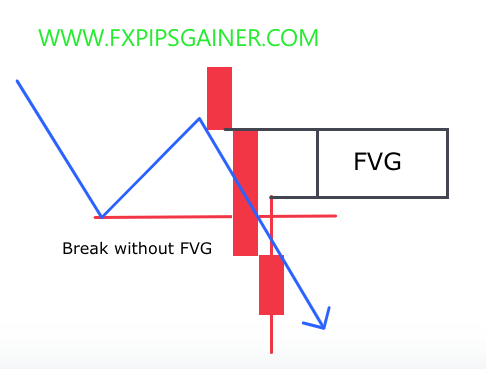Maximize your profit by copy our Trade
In the world of commodities, gold (XAUUSD) and oil are two of the most closely watched assets. Their prices are influenced by various factors, including economic conditions, geopolitical events, and market sentiment. One of the critical relationships in the commodities market is the correlation between oil prices and gold prices. This article delves into how higher oil prices can lead to inflation, which in turn affects the price of gold.
The Relationship Between Oil Prices and Inflation
1. Oil as a Fundamental Commodity
Oil is a primary energy source and is crucial for transportation, manufacturing, and various industries. As oil prices increase, the cost of goods and services also tends to rise. This phenomenon occurs because higher oil prices increase production and transportation costs, leading to higher prices for consumers.
2. Inflationary Pressures
When oil prices rise significantly, it can trigger inflationary pressures in the economy. Inflation is defined as the rate at which the general level of prices for goods and services is rising. As the cost of essential commodities like oil increases, consumers and businesses face higher expenses, which can lead to a decline in purchasing power.
3. Impact on Gold Prices
Gold is often seen as a hedge against inflation. When inflation rises, investors tend to flock to gold as a safe-haven asset, driving up its price. This behavior is rooted in the historical perception of gold as a stable store of value, particularly during times of economic uncertainty.
4. The Feedback Loop
The dynamic relationship between oil prices and gold creates a feedback loop:
- Rising Oil Prices: Increased costs lead to inflation.
- Inflation: Investors seek refuge in gold, pushing its price higher.
- Higher Gold Prices: A stronger gold market can further attract investment, reinforcing the cycle.
Additional Factors Influencing the Relationship
1. Geopolitical Events
Geopolitical tensions often affect both oil and gold prices. For example, conflicts in oil-producing regions can lead to supply disruptions, causing oil prices to spike. In such scenarios, investors may turn to gold as a safe-haven asset, further amplifying its price increase.
2. Central Bank Policies
Central banks play a crucial role in influencing inflation and commodity prices. When central banks adopt loose monetary policies, such as low-interest rates or quantitative easing, it often leads to higher inflation. This scenario typically results in increased demand for gold as a hedge against currency devaluation.
3. Currency Fluctuations
Both gold and oil are typically priced in U.S. dollars. When the dollar weakens, oil prices may rise due to increased demand from foreign buyers, while gold prices may also increase as investors seek to protect their wealth from currency depreciation. Conversely, a strengthening dollar can exert downward pressure on both commodities.
4. Market Sentiment and Speculation
Investor sentiment and speculative trading can also influence the relationship between oil and gold prices. Increased speculation in the oil market can lead to volatility, which may spill over into the gold market, as traders react to perceived risks and opportunities.
Conclusion
Understanding the interplay between oil prices and gold (XAUUSD) is crucial for investors and traders in the commodities market. As higher oil prices contribute to inflation, gold often becomes a preferred asset for those looking to protect their wealth. Monitoring these trends can provide valuable insights into potential price movements in the gold market, making it an essential consideration for investment strategies.
By recognizing this relationship and its influencing factors, investors can better position themselves to take advantage of market fluctuations and make informed decisions in their trading activities.
Recent Posts
- How to Trade Supply and Demand Zones in Forex Using SMC Strategy
- Binary Trading vs Forex: Gambling or Real Business?
- Professional Copy Trading Service Using Real Money Accounts
- Why You Should Avoid Sell Entries in Gold Trading
- Safe Gold Trading Strategy for XM Micro Accounts (Up to 12 Entries)
- What is a Cent Account?
- Smart Money Concepts: Mastering Mitigation Blocks, Breaker Blocks & QML
- Understanding ICT Reclaimed Order Blocks: How Institutions Control Market Moves
- How to Trade Consolidations in Forex and Other Markets
- How to Identify Real Forex Traders vs Fake Screenshot Gurus
- The Gold Accumulation System – A Safe Buy-Only Strategy for Cent Accounts
- The Dark Side of Forex: How Screenshot Scammers Trap New Traders
- CHOCH vs MSS: The Exact Difference Every Smart Money Trader Must Know
- Gold Buy-and-Hold Strategy Using Cent Account and Compounding Lot Size (No SL Trading Model)
- How to Trade Order Flow Imbalances: Simple Rules for Spotting Buy & Sell Order Blocks
- Copy Our Long-Term Gold Trading Strategy
- Execution Mode vs Outcome Mode — The Professional Approach to Managing Trades
- How I Achieved 80.95% Profit in One Year on HFM Copy Trading
- Why It Took Me 15 Years to Become a Profitable Trader
- How to Read and Interpret Profit Factor in Forex Backtesting
- Understanding the Institutional Accumulation Channel
- Understanding No-Deposit Bonuses in Forex: What You Need to Know
- XAUUSD Analysis Summary
- Gold Price Surge Summary
- XAU/USD(GOLD) Analysis 07/10/2025
- Gold Market Update 07/10/2025
- Gold(XAUUSD) Market analysis 07/10/2025
- Start your journey to Forex success
- আপনার ফরেক্স সফলতার যাত্রা শুরু করুন
- 7 Money Rules for Financial Awareness and Peace of Mind
- Gold Recovers Ahead of Nonfarm Payrolls: Key Insights
- Weekly Market Wrap: Gold Pulls Back Amid Dollar and Bond Rotation
- Copy Our Trade with OneRoyal
- Finding Your Path: How to Choose the Perfect Forex Mentor for Success
- Experience the Stability of a 100% Secure Trading Account!
- The 100% Profitable Trading Approach: Maximize Gains with Minimal Risk
- The Head and Shoulders Chart Pattern
- Bullish and Bearish Rejection Blocks: Identifying Key Trading Opportunities
- Just Market: Is It Worth Your Time and Money?
- Why LiteFinance Stands Out: A Comprehensive Review
- Understanding XAUUSD: Gold Strategy and Central Bank Reserve Management
- Hotforex Copy Trading Service
- Understanding Profit Factor: A Key Metric for Trading Success
- Supply and Demand Dynamics: How Gold Production Affects XAUUSD
- The Safe Haven: Gold as a Strategic Investment During Economic Downturns
- Mastering Deception: How to Scam as a Forex Signal Provider
- The Impact of Rising Bond Yields on Gold (XAUUSD)
- Understanding the Correlation Between Oil Prices and Gold (XAUUSD)
- The Impact of Geopolitical Events on Gold Demand (XAUUSD)
- Fundamental Strategy Overview: XAUUSD (Gold)

